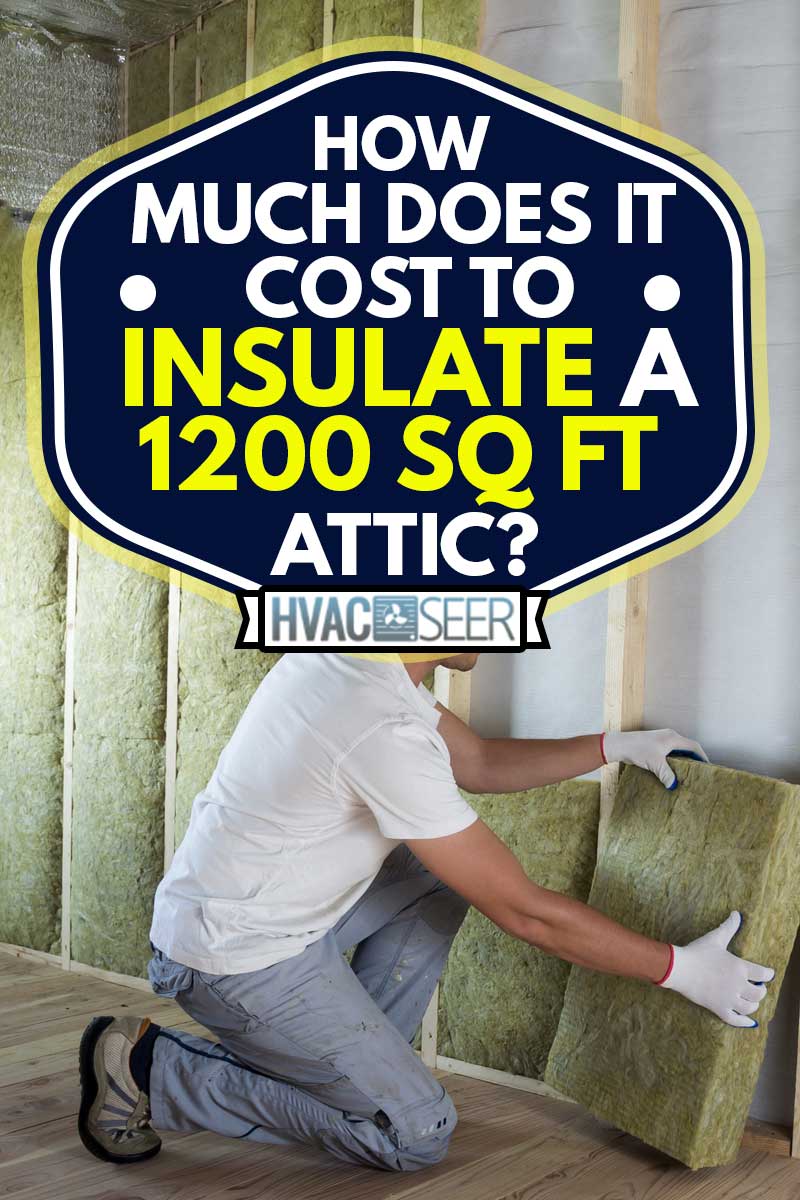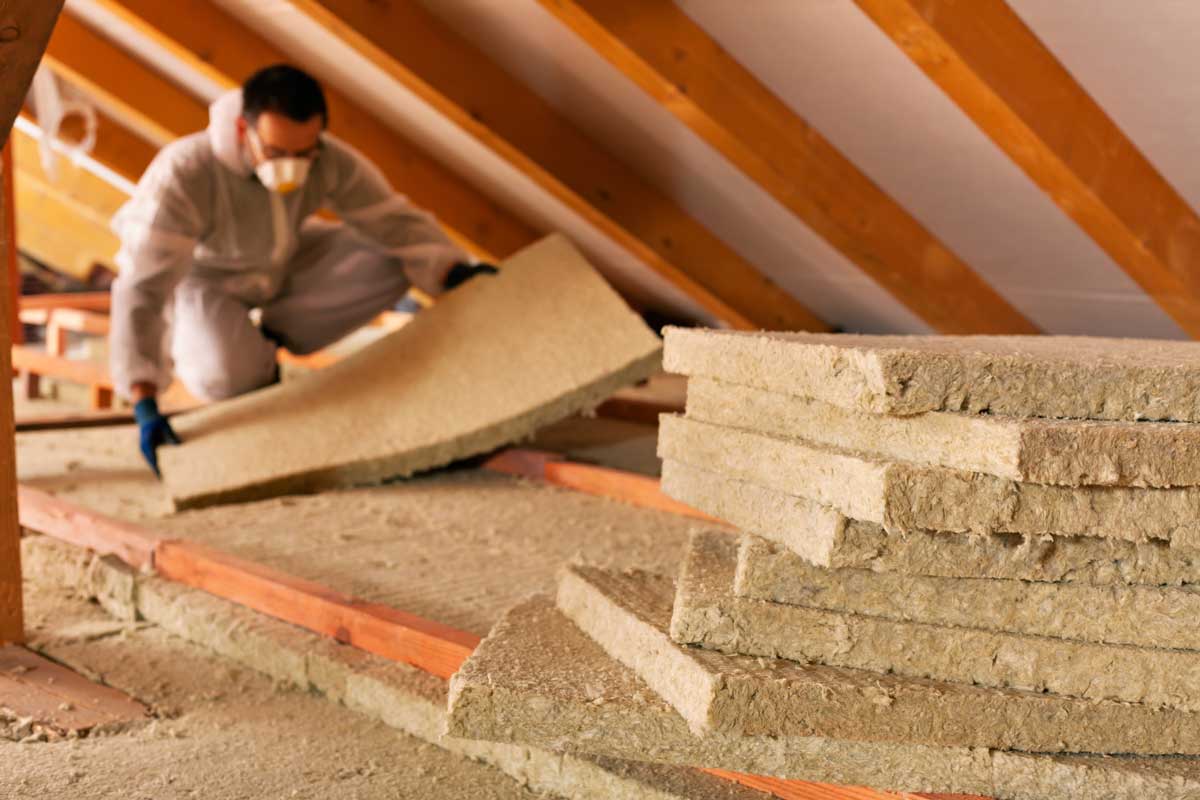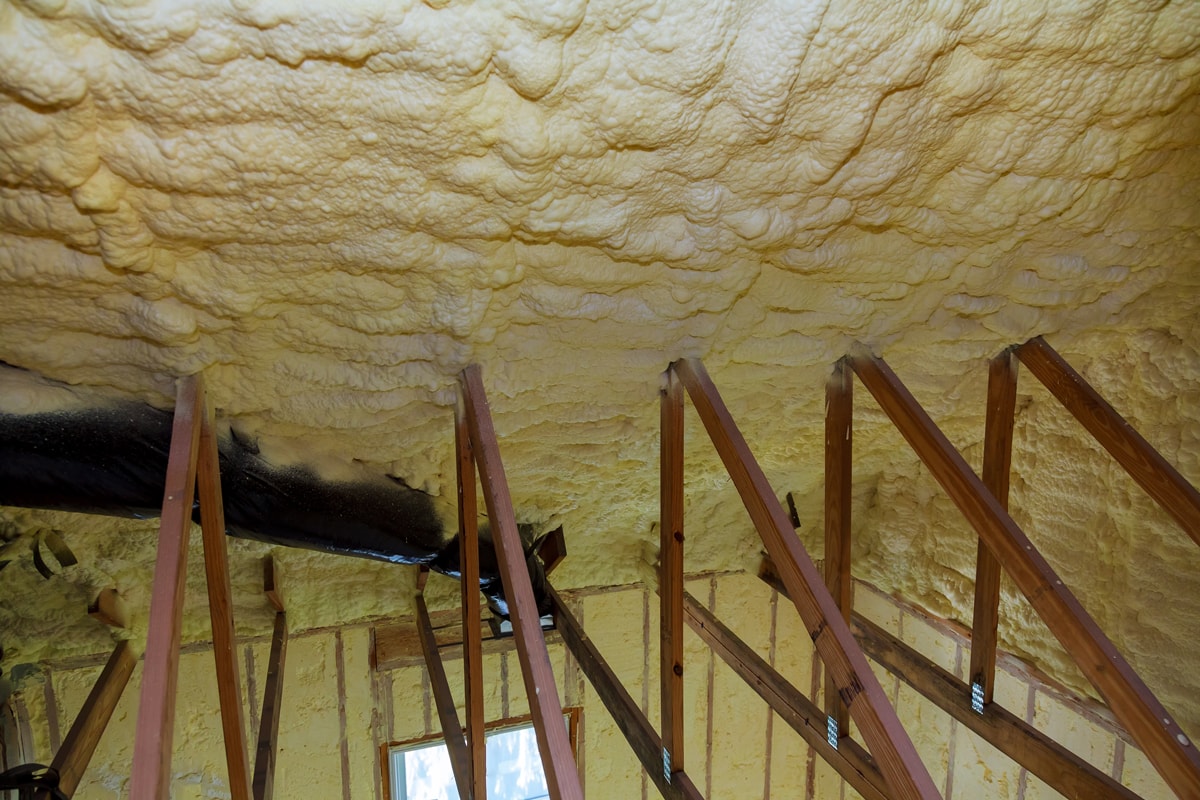Many HVAC experts agree that attics are usually the number one culprit for heat loss in a home. If an attic is poorly insulated, it can drive up energy bills in warm and colder months. To keep your home comfortable and cool, effective insulation in the attic is an absolute must. But how much does attic insulation cost? We've researched to answer this question for you, and this post aims to help you find the best option for your home's attic.
There are a few options available when it comes to attic insulation; projects are usually priced per square footage of the area being insulated. Other pricing factors include the insulation type and the R-Value (or measurement of the insulation's density) required for the home. Below are the price ranges for the most common types of insulation:
- Fiberglass Batts and Rolls - $1,044 to $2,554
- Loose Fill/Blown-In Insulation - $1,800 to $2,796
- Cellulose - $1,920 to $3,780
- Radiant Barriers - $900 to $1,500
Various insulation types are capable of providing an effective barrier to help maintain your home's temperature settings. Please keep reading as we explore the costs associated with each.

Factors That Affect Insulation Pricing
Every home and every attic is different, which means that the factors influencing insulation requirements will differ. Here are a few of these factors:
- Square footage of the attic
- Required R-value or thickness of insulation needed
- Type of insulation used (fiberglass batts, blow-in, etc.)
- Accessibility of the attic (some contractors charge more for hard-to-reach or tightly-spaced attics)
Let's take a closer look at the cost breakdown of insulating a 1,200-square-foot attic.
Fiberglass Batts and Rolls
Labor Cost: $.20 to $.80/square-foot
Total Cost for 1,200-square-foot attic: $1,044 to $2,554
Loose Fill/Blown-In Insulation
Material Cost: $1/square-foot to $1.33/square-foot
Labor Cost: $0.50 to $1.00/square-foot
Total Cost for 1,2000square-foot attic: $1,800 to $2,796
Cellulose (a type of blow-in)
Material Cost: $1.10/square-foot to $2.15/square-foot
Labor Cost: $.50 to $1.00/square-foot
Total Cost for 1,200 sq ft attic: $1,920 to $3,780
Radiant Barriers
Material Cost: $0.10/square-foot to $0.25/square-foot
Labor Cost: $0.65/square-foot to $1.00/square-foot
Total Cost for 1,200 sq ft attic: $900 to $1,500
What Is The Best Insulation For An Attic?

The best insulation for an attic depends on a few things. These factors include the type and shape of your attic, the R-level of insulation required for your home, as well as your personal preference. Below are a few of the advantages and disadvantages of the above-mentioned insulation types.
Fiberglass Batts and Rolls
The Pros
Fiberglass batts and rolls tend to be the most common insulation type used in most homes. Why? Because it's the most versatile and affordable insulation option. This insulation type is commonly used in attics and other areas of the home (bedrooms, living areas, basement, etc.).
Fiberglass batts are made from raw materials, including limestone, silica sand, and soda hash, making it flame-retardant. It's also fairly simple to install and can easily cover studs, joists, and spaces in-between them.
The Cons
Fiberglass rolls can be challenging to install in attics that contain a lot of irregular or small spaces. If the batts are not installed properly in-between joists, they can lose their insulating capabilities, leading to condensation and heat loss.
Loose Fill/Blown-In Insulation
The Pros
Loose-fill insulation can quickly be blown into attics, newly finished walls, and hard-to-reach areas, making for a fast install. The material is eco-friendly and consists of 80% recycled newspapers, unlike fiberglass, which can be a health hazard.
The Cons
This blow-in insulation may provide more thorough coverage than fiberglass rolls, but it doesn't offer the same seal efficiency as foam insulation. Also, if the material is blown in too heavily, it can cause sagging on the home's ceilings. Lastly, the effectiveness of blow-in insulation tends to diminish over time as the material settles.
Check out this fiberglass insulation on Amazon.
Cellulose
The Pros
This type of insulation is made mostly of recycled paper that has been treated with boric acid, making it fire-retardant. Cellulose is a superb insulator material. It works great in attics and allows for maximum energy savings.
The Cons
Cellulose insulation is usually blown-in by a machine, leading to issues if not done correctly (which may be the case with a DIY'er). Its biggest setback is that over time it can be subject to settling, as well as mold and rot if it gets wet.
Radiant Barriers
The Pros
Radiant barrier insulation is made of thin and flexible bubble-packs that have a foil or foil laminate backing. They are suitable for attics, as they can reduce attic temperatures by up to 25- to 30-degrees, resulting in notable energy-savings in the warmer months. Radiant barrier insulation also doesn't develop mold or degrade as fast as blow-in insulation may.
The Cons
This insulation type is not particularly effective in the winter months, as it does not have the density levels of other insulation types. While it may be a great addition to an attic, it does not have the capability to insulate an attic's cavities effectively. Also, since its surface is non-porous, it tends to collect dust and dirt pretty quickly.
Check out this radiant barrier insulation on Amazon.
How Often Should You Re-Insulate Your Attic?
HVAC specialists recommend performing a spot check of your attic insulation about every 15-years. Today, most insolation is designed to last for the entire lifetime of a home. However, if your insulation has lost its ability to work effectively, replacing it sooner than later can help save you money on your energy bills.
Here are a few signs that suggest that it's time to replace the insulation in your attic.
Higher Energy Bills
One of the biggest signs that your attic insulation needs replacement is a climbing energy bill. Has your gas or electric bill spiked from the previous year or month? If you find that you're constantly running your heater in the winter and the air conditioning in the summer, bad insulation may be the culprit. Not only can it run up your energy bills, but it can also decrease the life of your HVAC system by causing it to work overtime to keep your home comfortable.
Interior Temperature Changes
It's not uncommon for the insulation in an attic to shift, causing cold air to seep inside the home through open spaces in gaps. If the temperature in your home begins to change suddenly, it can result from insulation that is not working effectively.
Varying Temperatures In Individual Rooms
Insulation inside a home won't wear out at the same time in every area. Have you noticed that the temperature in one room is vastly different from the temperature in another? It could be that the insulation located in one section of the attic is performing optimally, while the insulation in another area of the attic is not.
Your Home Suddenly Seems Drafty
Whenever outdoor air makes its way to the inside of your home, it can mean that you do not have a sufficient amount of insulation in your attic. If the temperature in your home never seems to reach your preferred thermostat setting, even with all the windows shut and all of the doors closed, you may want to take a look at your attic's insulation. It could be that the insulation has suffered damage from things such as home renovations and leaks, or just wear and tear over time.
Pest Infestation
Pests and insects love crawling into attics and crawl space areas in the colder months to escape the weather. If you're beginning to hear rattling sounds or strange noises coming from your attic, it may be that you have a pest infestation. Mice, squirrels, possums, and bats are the most common pests found in attics. Not only can they damage your insulation, but they can eat away at your electrical wiring and drywall, forcing you to spend hundreds or even thousands of dollars to fix the damage.
How Many Inches Of Insulation Should Be In An Attic?
Most homes will require anywhere from 9- to 17-inches of insulation in the attic. However, the answer changes depending on where you live and when your home was constructed. Different climates will require different types and levels of insulation.
Because of this, most city and local townships have code or zoning requirements for the amount of insulation in new and existing homes. If you are buying a new home or replacing your current insulation, it's best to check with your local government to ensure that it meets their current requirements.
You can also find this information by visiting the energy star website. After you locate your zone on the map, you can find the corresponding number and recommended insulation coverage for your home.
Can You Over-Insulate An Attic?

When it comes to providing sufficient insulation coverage for your home's attic, there typically aren't many safety concerns. However, there can be some downsides to installing too much. The first being that your home will simply be too warm, which may not be as big of an inconvenience if you live in a predominately cold area.
The second disadvantage is that the insulation can block your home's air vents. The vents in your attic allow warm air to naturally expel from it, replacing it with fresh cool air from outdoors. If the entry of fresh air to your attic is obstructed, it can cause increased humidity levels, leading to mold and other moisture-related issues such as mildew and wood rot.
To Sum Things Up
Insulating an attic can be either a very involved process or a very quick process, depending on your attic size and the type of insulation you use. A local HVAC contractor can help you determine the best insulation for your home and give you an estimate of how much it will cost.
Before you go, be sure to check out our other post about home insulation:
https://hvacseer.com/how-much-cost-to-insulate-2000-sq-ft-house/
https://hvacseer.com/best-insulation-for-attics/


